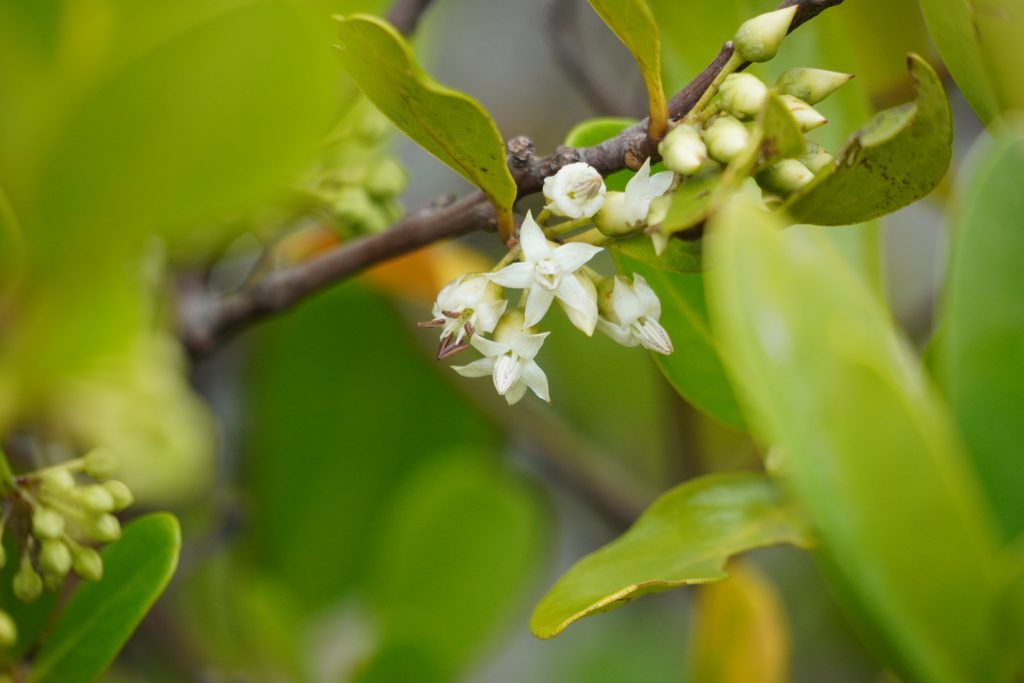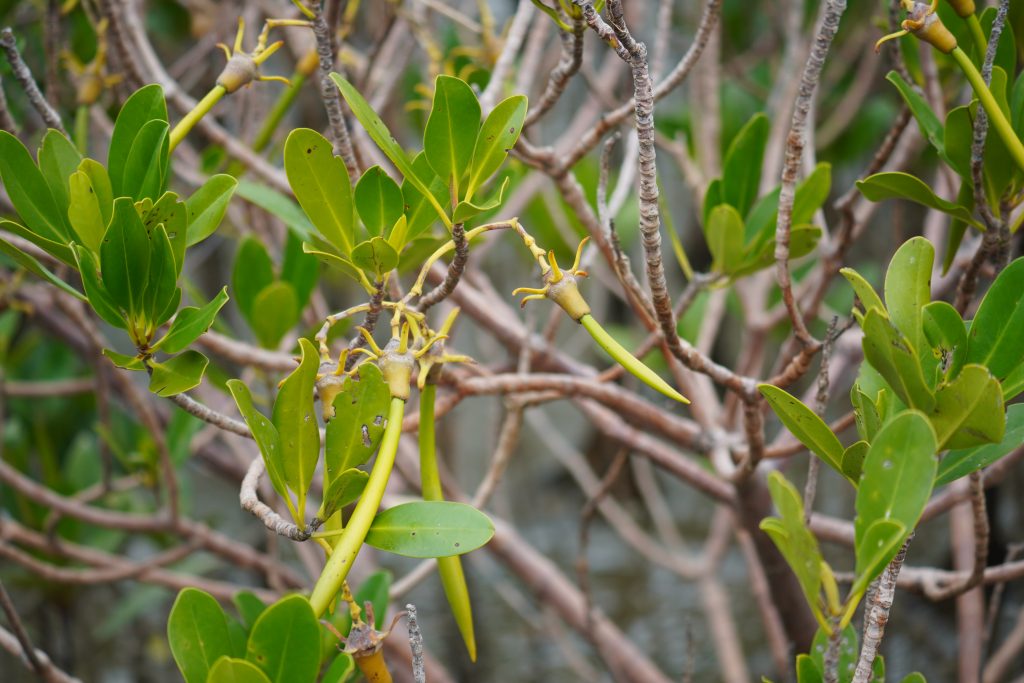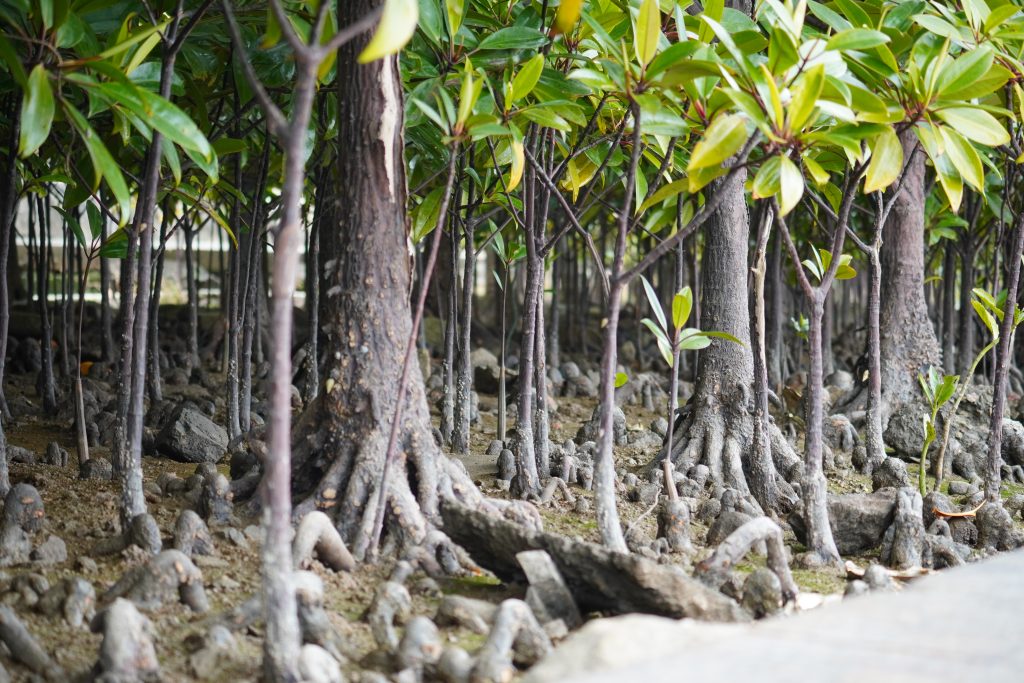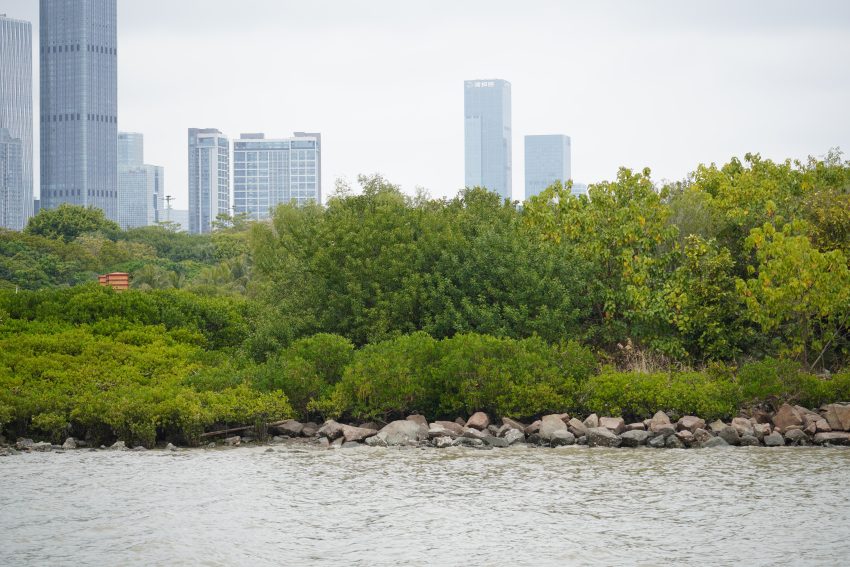
Mangroves are a special forest that transitions from land to oceans. They are also one of the few ecosystems with the most diverse species in the world so far, with very rich biological resources. The mangroves have evergreen trees and shrubs, and the woods are very dense. The tide and low tide are rising every day on the beach. At high tide, the trunks are all submerged by sea water, and the canopy ripples on the water; after the tide is gone, the trees stand upright on the beach, forming a unique landscape on the beach.

The environment in which the mangroves are located is extremely unstable, and the rise and fall of sea water poses great threat to it. Without extraordinary skills, it is difficult to “settle” on the beach. Take seed germination as an example. If the seeds fall off and fall into the sea immediately after ripening, they will be washed away by the ruthless waves and will not get the opportunity to reproduce. Therefore, mangrove plants have a “viviparous” phenomenon.

The fetal growth of mangrove forests is divided into exogenous and cryptic vivo. When the seeds germinate, the hypocotyl extends significantly and gradually breaks through the skin, forming a viviparous seedling that looks like a long “water pen”, which belongs to the viviparous life. Plants that perform viviparous reproduction in mangrove forests are mainly concentrated in the Mangrove family, including mangroves and red sea olives of the Mangrove genus, erectile olives of the Mangrove genus, erectile olives The autumn eggplant of the genus Autumn Eggplant all have long viviparous seedlings growing outside the fruit, forming the wonder of “tree-hanging seedlings”.

The combyl of the cryptoviparous plant does not extend out of the fruit skin. The germinated seeds are wrapped in the fruit skin and cannot be seen outside the fruit. The combyl extends out of the fruit after the fruit falls to the ground. The white bone soil of the Verbena family and the tung flower tree of the Viagra family. Plants such as rats and cervicalis from the Hejue family belong to this category. Pull the peel of the cryptovipois plant and you can find the seeds that have already germinated inside.

